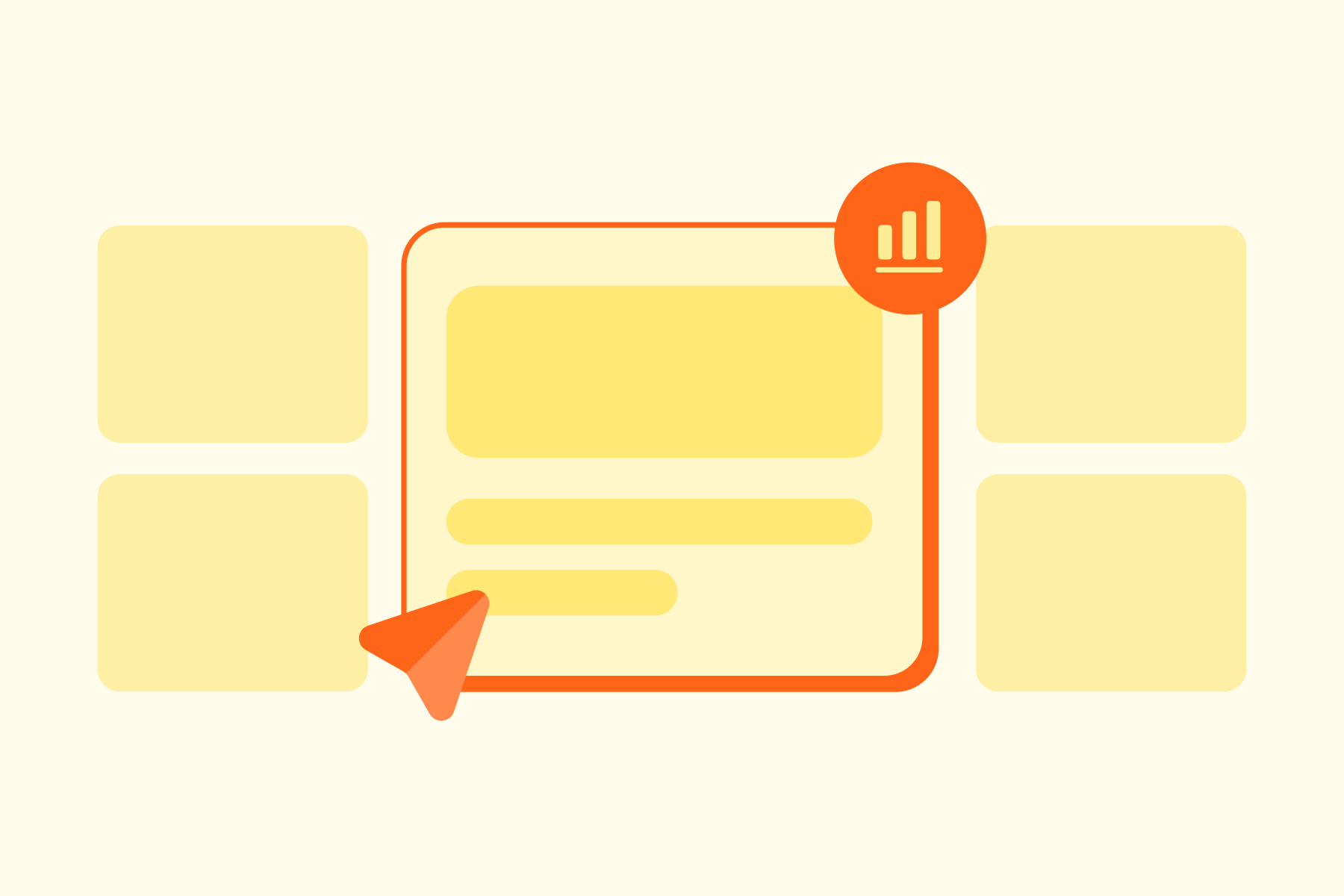Before You Scale Your SaaS - Fix This One Thing
Anastasiya Khvin
November 26, 2025

Most startups don't fail because they can't get customers. They fail because they scale too soon.
We've watched it happen more times than we can count. A founder strings together a few solid growth months, raises a Series A, and boom - suddenly they're burning cash on Facebook ads, building a sales team, and shipping features nobody wants. Fast forward six months? The burn rate looks terrifying, customers are leaving faster than they're arriving, and the spreadsheets tell a horror story.
Scaling a SaaS business isn't like flipping a light switch. After working with companies like Mixpanel, ShipBob, and Originality.AI, we've learned there's one thing that seperates SaaS companies that scale successfully from the ones that crash and burn.
The Hidden Cost of Premature Scaling
What does premature scaling really cost? Way more than wasted ad spend, that's for sure.
Scaling Without Foundation Is a Recipe for Disaster
When you scale before you're ready, you're taking a bucket full of holes and trying to fill it faster. Sure, more water goes in. But you're also losing more through those holes. The math doesn't change - it just gets expensive.
Last year we worked with a SaaS startup spending fifty grand a month on Google Ads and Facebook. Their customer acquisition cost looked fine on paper. The problem? They had 8% monthly churn. Every dollar spent on acquisition basically subsidized their competitors.
The hidden costs go way beyond the obvious stuff. There's engineering time wasted on features for customers who won't stick around. Support tickets piling up because onboarding is broken but everyone's too busy chasing new signups to fix it. When we ran our audit, the numbers told a story the founders didn't want to hear - but needed to.
What Successful SaaS Companies Do Differently
The companies that actually scale successfully do something radical. They pause. They measure. They fix what's broken before they pour gasoline on it.
When we started working with Orion Labs, they wanted to understand their metrics first, optimize what worked, and only then scale up. In the first six months alone, we increased the value of their sales opportunities from paid campaigns by over 60%. As we continued, that number grew to 4X overall - because we scaled something that actually worked.
The One Thing You Must Fix Before You Scale - Your Customer Retention Foundation
It's not your pricing. Not your product features. Not even your go-to-market strategy.
It's your retention foundation.
Retention isn't sexy. Nobody throws a party when they reduce churn by two percentage points. But your retention rate determines whether scaling makes you successful or bankrupt. One of our team members puts it this way: "Marketing rarely fails because of low traffic. The real leak is often deeper in the funnel." And that leak? It's almost always retention.
If you're losing 5-10% of customers every month, you need to acquire that many new users just to stay flat. That's not growth; that's treading water. And the second you start throwing money at customer acquisition while retention is broken, you're just speeding up your path to failure.
Why Churn Rate Determines Your SaaS Scalability
Your churn rate isn't another metric - it's a report card for your entire SaaS business. It tells you whether you've nailed product-market fit, whether your onboarding actually works, whether customers get real value from your SaaS product.
The Math That Every SaaS Startup Needs to Understand
Say you're acquiring 100 new customers monthly at $100 each - that's $10K in CAC. If monthly churn is 7%, you lose 7 customers in month one. By month 12? You're losing 58 customers monthly. Eventually the leaks overtake the inflow.
How Churn Compounds Over Time
See how the leaks catch up? By month 12, you're spending the same $10K in CAC but only netting 42 customers instead of 93. That's a 55% decrease in efficiency.
We ran numbers recently for a client in the analytics space. They wanted to scale from $500K to $3M ARR in 18 months. Except their churn sat at 6% monthly. When we modeled it out using our analytics framework, they'd need to acquire so many customers that CAC would skyrocket, their sales team would burn out, and they still wouldn't hit target.
So we told them not to scale yet. Fix churn first, then we talk growth.Six months later when their churn dropped to 3%, they thanked us.
When Low Churn Becomes Your Competitive Advantage
In the long run, your churn rate matters more than your growth rate.
A SaaS company with 2% monthly churn and 10% monthly growth will demolish a competitor with 7% churn and 15% growth. Might not look that way in month six. But by month 24? The difference is staggering.
Before You Scale Your SaaS Business, Run These Numbers
Before you even think about scaling, you need to get intimate with your unit economics. Not vanity metrics - the real numbers that determine whether your business model works.
Customer Lifetime Value vs Customer Acquisition Cost
The LTV to CAC ratio is probably the most important metric in your SaaS business. Don't know this number off the top of your head? Stop reading. Go calculate it now.
For a healthy SaaS business, you want LTV to be at least 3X your CAC. When we audit companies, we see startups with ratios of 2 to 1 or worse. That might work if you're playing the growth-at-all-costs game - but it's not a path to sustainable growth.
David Skok's framework on SaaS metrics has become the gold standard in the industry, and for good reason. The math doesn't lie. If your unit economics are broken, no amount of growth hacking will save you.
SaaS Unit Economics Health Check
Your Unit Economics Are Telling You a Story
If CAC is climbing, your acquisition channels are probably saturated or your conversion rate is dropping. If LTV is declining, you've got a retention or expansion problem.
We track these metrics obsessively for clients. These numbers are early warning signals. When we saw CAC creeping up for a client last quarter, we caught it early, paused campaigns that weren't working, and reallocated budget.
Key Metrics That Signal You're Ready to Scale
So when are you actually ready?
Churn rate below 5% monthly. LTV to CAC ratio of 3 to 1 or higher. Payback period under 12 months. Net revenue retention over 100%. Consistent month-over-month growth without major spikes or valleys.
If you've got all five, you're probably ready to scale. Missing even one? Fix it first.
How Product-Market Fit Impacts Your Scaling Strategy
If you don't have product-market fit, you have no business trying to scale a SaaS.
Product-market fit is that point where your SaaS product solves a real problem so well that people pay for it, keep paying for it, and tell their friends about it. You know you have it when customers would be genuinely upset if your product disappeared tomorrow.
Tons of SaaS founders think they have fit when they don't. They confuse early adopter enthusiasm with true market fit. Marc Andreessen's classic definition still holds: product-market fit means being in a good market with a product that can satisfy that market. If you have true product-market fit, people don't churn much. If churn is high, you probably don't have the fit you think you do.
The Customer Success Framework That Enables Sustainable Growth
Customer success isn't a department - it's a growth strategy for scaling SaaS products.
Building Onboarding That Reduces Early Churn
Most churn happens in the first 90 days. Why? Onboarding is broken.
People sign up excited. Then they log in and nothing happens. The interface confuses them. There's no clear path to value. So they click around for ten minutes, get frustrated, and never come back.
Great onboarding gets people to value as fast as possible. What's the "aha moment" in your product - that point where someone realizes "oh, this actually solves my problem"? Your onboarding should be a guided path to that moment.
We redesigned onboarding flow for a client and reduced their 30-day churn by almost half. This is where our conversion rate optimization services come together with landing page design - because even the best ad campaign can't save a broken landing page or confusing user experiance.
Turning Customer Support Into a Retention Engine
Customer support is your source of retention data and your most powerful tool for reducing churn. Every support ticket is a customer telling you something's broken. Every cancellation reason is a clear signal about what needs fixing.
When we analyze data for SaaS clients, we dig into customer support metrics. How fast are you responding? What are the common pain points? Which issues correlate with churn? Harvard Business Review research demonstrates that acquiring a new customer costs 5 to 25 times more than retaining an existing one.
Strategies for Scaling Your SaaS Only After Fixing the Foundation
So you've done the work. Retention is solid, unit economics make sense, customers are actually happy. Now what?
Automate What's Working, Not What's Broken
This might be the biggest mistake we see - companies trying to automate before they figure out what actually works.
Automation amplifies whatever you put into it. Automate a broken sales process? You get more broken sales. Figure out what works manually first. Document it, test it, refine it. Then automate. This applies to everything: email sequences, ad campaigns, customer onboarding, lead qualification.
When to Invest in Sales and Marketing
When should you invest in sales and marketing? When you've proven that your current acquisition channels work profitably at your current scale.
Before we scale any paid search or paid social campaign, we test, measure, optimize. When we increased Google Ads sales by 100% for Originality.AI, it wasn't because we threw more money at the problem. We refined campaigns, improved targeting, fixed landing pages, and then scaled what worked.
Start small, prove it works, then scale hard.
Scaling Your Infrastructure vs Scaling Your Revenue
We've seen companies hire a VP of Sales when they have 20 customers. Or build 24/7 support when they have 100 users.
Better approach? Scale your infrastructure slightly ahead of where you need it - not five steps ahead. You want enough capacity that business growth doesn't break things, but not so much that you're burning cash on unused resources.
Best Practices From SaaS Companies That Scaled Successfully
We've worked with Mixpanel, ShipBob, Uppbeat, and others. There are patterns among SaaS companies that scale successfully.
They're patient. They don't rush to scale before they're ready. They're metrics-obsessed - they know their numbers cold. When we worked with Mixpanel on their paid acquisition, this data-driven mindset made all the difference - we increased leads by 164% while driving down cost per lead by 67%.
They invest in retention early. They build customer success teams before massive sales teams. They're willing to say no to wrong customers and feature requests that don't align with their vision. They think long-term - they're building a business, not hitting quarterly targets.
Proven Strategies for Growth After You've Fixed Your Foundation
Once you've got your foundation solid, strategies for scaling your SaaS become way more straightforward.
Optimizing Customer Acquisition Without Increasing Churn
The trick to healthy scaling is acquiring the right customers, not more customers. This means getting specific about your target audience and targeting them precisely.
With Mixpanel, we dramatically increased lead volume while driving down cost per lead. How? By getting super targeted with campaigns, continuously testing and refining, and ruthlessly cutting what didn't work.
Pricing Strategies That Support Scalability
Your pricing strategy should evolve as you scale. What works at 10 customers won't work at 10,000.
The strongest pricing strategies are value-based, include expansion revenue (so customers can grow with you), and discourage wrong customers from signing up. Good pricing actually repels wrong customers. If you're a premium SaaS solution, your pricing should reflect that.
How Different SaaS Pricing Models Scale
Product Development That Serves Your Current Customer Base First
As you scale, it's easy to chase every new market opportunity or build new features for potential customers. Resist this urge.
Your current customers - the ones already paying you - should be your North Star for product development. Building for current customers compounds in ways that building for hypothetical customers doesn't. Happy customers refer others, expand usage, become case studies and advocates.
Moving Forward - Your Roadmap to Scale a SaaS Business Effectively
Scaling a SaaS business isn't about pushing the gas pedal harder - it's about making sure your engine works before you take it to the highway.
Fix retention first. Get unit economics right. Build a customer success foundation. Then - only then - scale hard.
We've seen this playbook work dozens of times at Aimers. Companies that do the work upfront, that fix their foundation before they scale, build sustainable, profitable businesses. The ones that skip these steps? They burn bright for a few months and then flame out.
You can chase growth at all costs and hope it works out - or you can do it the right way: build a solid foundation, then scale smartly.
Ready to Scale Your SaaS the Right Way?
Fixing retention, tuning unit economics, and building a foundation before scaling isn't the sexy growth-at-all-costs story that makes headlines. But it's the approach that actually works for long-term success.
At Aimers, we've helped companies like Mixpanel, ShipBob, and Originality.AI scale sustainably with data-driven marketing strategies that focus on what matters - profitable, repeatable growth built on solid fundamentals.
If you're wondering where your ad budget is silently leaking or whether your foundation is actually ready to scale, let's talk. We'll look at your metrics, identify what's holding you back, and show you exactly what needs to happen next. No fluff, no generic advice - just actionable insights based on what we've seen work dozens of times.
Because the difference between SaaS companies that scale successfully and those that flame out isn't luck - it's having the right strategy and the right partner to execute it.










